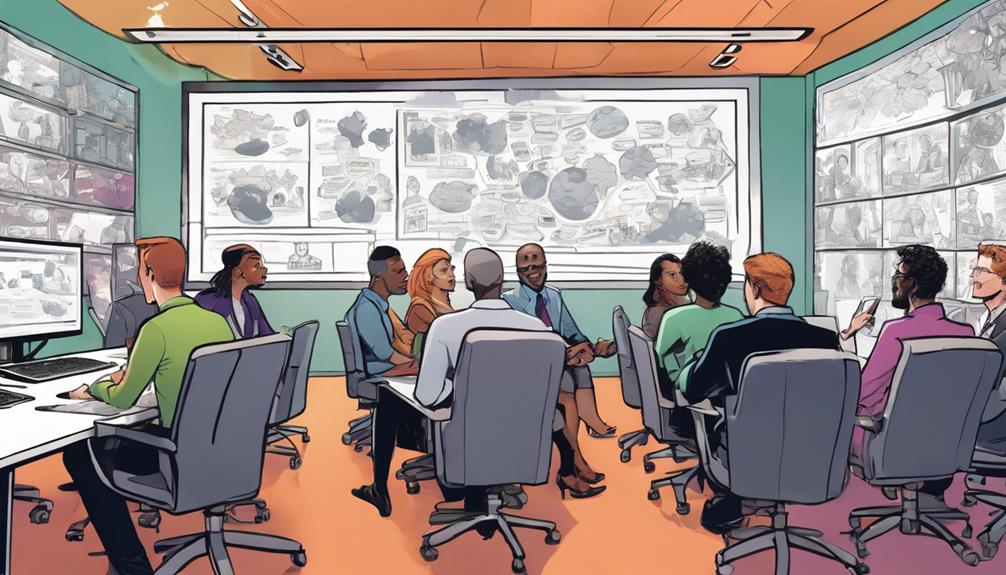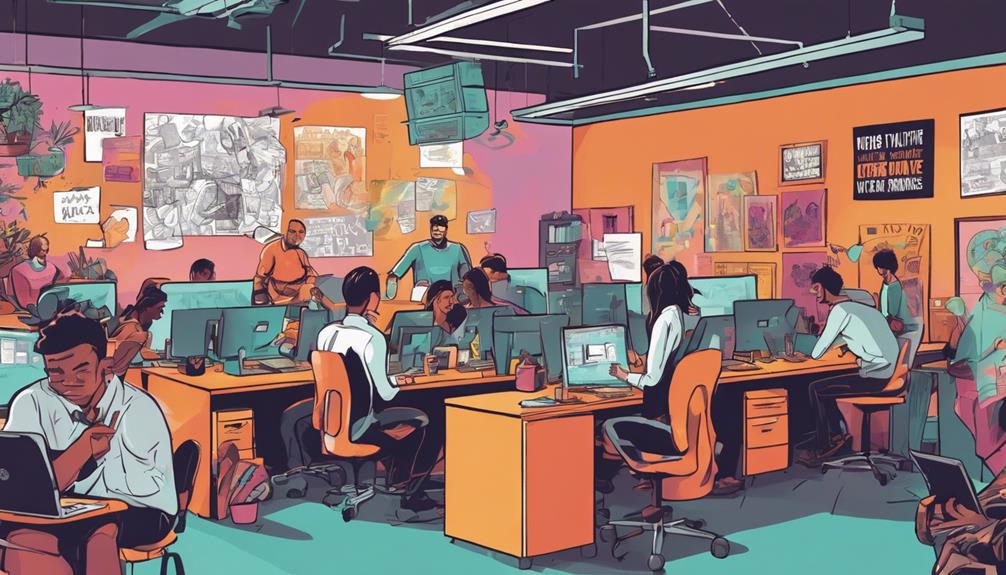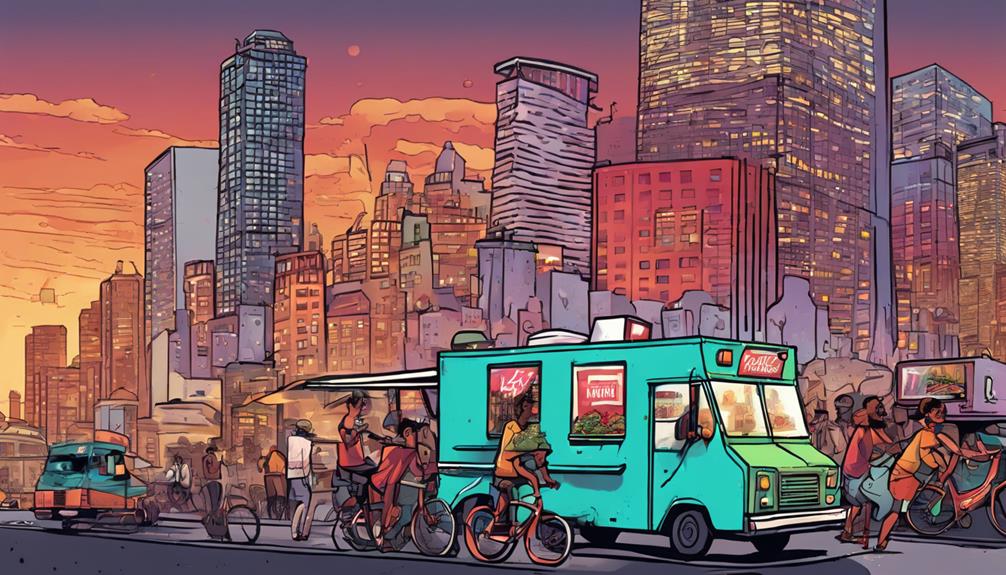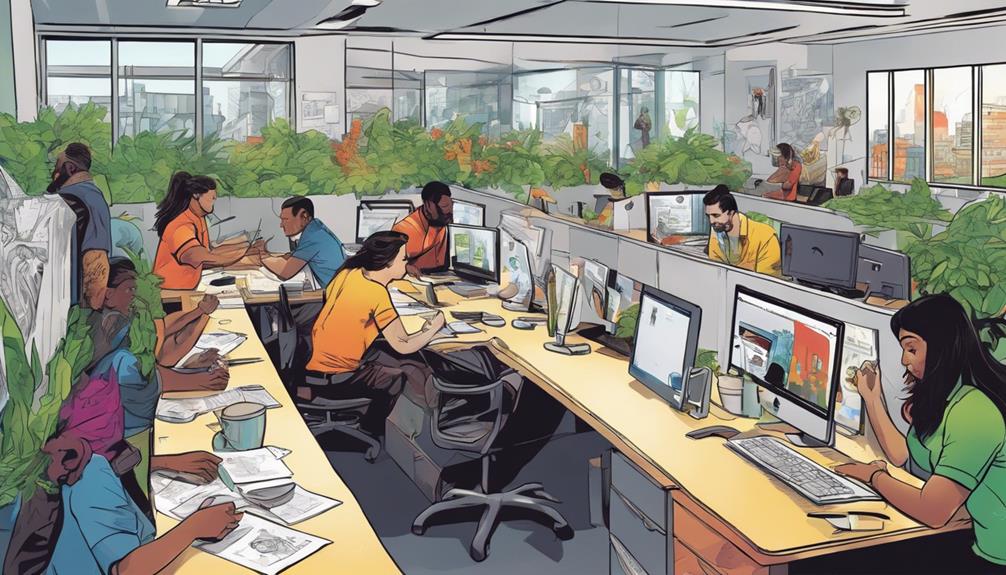Grubhub's journey from a modest startup to a food delivery sensation showcases how innovation drives success. Founded in 2002 by Mike Evans and Matt Maloney, it started by listing Chicago restaurants lacking delivery options. Its shift to a commission-based model and the introduction of online ordering led to impressive growth. Key milestones include going public in 2014 and expanding into major cities. Along the way, Grubhub faced challenges, including relationship strains with partner restaurants. The company's commitment to improving work conditions and sustainability shows it values people alongside profits. Continue exploring to uncover more about Grubhub's evolution and future.
Key Takeaways
- Grubhub was founded in 2002 by Mike Evans and Matt Maloney, addressing the need for efficient food delivery services.
- The company shifted from premium listings to a commission-based model, significantly boosting revenue and order volume.
- Key expansion milestones included acquiring CampusFood and Seamless, and going public in April 2014, enhancing market presence.
- Challenges arose from strained relationships with restaurants and employee burnout, highlighting the importance of maintaining company culture.
Origins of Grubhub
Grubhub started from a simple idea born out of frustration during a commute, transforming into a platform that revolutionized how you order food online.
Co-founder Mike Evans faced a challenge in 2002 and decided to map Chicago restaurants while coding. Initially, the site was just a list of eateries, lacking delivery services.
The first revenue came when a restaurant paid $140 for a premium listing, and Evans and co-founder Matt Maloney gathered menus door-to-door. They soon shifted to a commission-based model, which greatly boosted earnings.
When online ordering was introduced, orders tripled, and the company raked in $20,000 within the first month.
This early growth laid the foundation for Grubhub's future success and expansion.
Early Business Model

The early business model focused on monetizing restaurant listings through premium fees, paving the way for a more lucrative commission-based structure that markedly increased revenue.
You'll find that Grubhub's initial approach involved charging restaurants for enhanced visibility on their platform, which started with a $140 premium listing.
As the platform gained traction, Grubhub integrated online ordering, effectively tripling order volumes within a month. This shift not only improved user experience but also set the foundation for a commission-based model.
By charging restaurants a percentage of each order, Grubhub could scale its operations rapidly, creating a win-win for both the company and its restaurant partners.
This strategic evolution laid the groundwork for Grubhub's future success in the competitive food delivery market.
Key Expansion Milestones

Key milestones in Grubhub's expansion journey include the strategic hiring of its first employee and the successful funding acquisition that fueled growth into new markets. Today, Grubhub has transformed from a humble kitchen to corporate giant, with a presence in over 4,000 cities and nearly 300,000 restaurant partners. The company’s commitment to providing convenient and reliable food delivery has propelled its expansion and solidified its position as a leader in the industry. In addition to its impressive growth, Grubhub’s strategic partnerships and innovative technology have contributed to its success as it continues to meet the evolving demands of the market.
You'll find that the $50,000 secured from the University of Chicago's New Venture Challenge was pivotal, allowing Grubhub to tap into a broader network and additional funding opportunities.
As you explore Grubhub's journey, notice how its targeted efforts in cities like San Francisco and the acquisition of CampusFood and Seamless considerably boosted its market reach.
Going public in April 2014 marked another critical point, showcasing Grubhub's success and increasing its visibility.
Challenges During Growth

Rapid expansion into major cities brought considerable challenges that tested the company's ability to maintain relationships with independent restaurants and navigate employee dynamics. You might find it surprising that as Grubhub grew, the focus shifted from supporting local eateries to chasing profits. Here's a quick breakdown of the key challenges faced during this period:
| Challenge | Impact on Restaurants | Employee Dynamics |
|---|---|---|
| Loss of control over direction | Strained relationships | 'Get rich quick' culture |
| Capped fees at 17% | Increased criticism | Profit vs. quality conflict |
| Inclusion of major chains | Compromised brand image | Internal tensions |
| Gig economy reliance | Exploitative practices | Lack of benefits |
| Burnout among employees | Quality service decline | High turnover rates |
These challenges considerably shaped Grubhub's operational landscape during its growth journey.
Leadership Insights

Reflecting on his journey, Evans emphasizes the crucial role of leadership in steering through the complexities of a rapidly evolving business landscape.
You'll find that starting a business is often the toughest hurdle, requiring passion and commitment.
As he navigated Grubhub's growth, he recognized the importance of maintaining a clear vision, especially when pressures from public markets threatened employee welfare.
Evans critiques the exploitative nature of gig economy models, urging leaders to prioritize their teams.
Learning from past mistakes, he advises future entrepreneurs to foster a supportive culture, balancing profit with employee satisfaction.
Ultimately, effective leadership is about making conscious choices that align with core values and ensuring that people come first in any business endeavor.
Reflection on Company Culture

Company culture plays an essential role in shaping the overall success and employee satisfaction within a rapidly growing business like Grubhub.
As you navigate this dynamic environment, you'll notice that a strong culture fosters collaboration and innovation among team members. When employees feel valued, they're more likely to contribute positively, driving the company forward.
However, as Grubhub expanded, challenges arose, leading to a culture that sometimes prioritized profit over people. Reflecting on this, you'll see that a balanced approach is crucial.
Emphasizing transparency and empathy can help restore a sense of community. Ultimately, by nurturing a healthy company culture, you'll enhance both employee morale and customer satisfaction, ensuring sustainable growth for the future.
New Initiatives and Ventures

As Grubhub continues to evolve, new initiatives and ventures focus on enhancing sustainability and community impact in the food delivery industry.
You'll see them actively pursuing innovative strategies that prioritize both the environment and local communities. Here are some key initiatives:
- Sustainable Packaging: Grubhub is working with restaurants to reduce plastic waste by promoting eco-friendly packaging options.
- Community Partnerships: They're collaborating with local nonprofits to support food security efforts, ensuring that underserved communities receive access to meals.
- Driver Support Programs: Grubhub's launching initiatives aimed at providing drivers with better resources and benefits, improving their working conditions.
These efforts not only strengthen Grubhub's brand but also contribute positively to your community, making food delivery a more responsible choice.
Future of Food Delivery

The future of food delivery is set to be shaped by technological advancements and a growing demand for sustainable practices, pushing companies to innovate and adapt to changing consumer expectations.
You'll likely see more automation and AI-driven solutions, streamlining order processing and enhancing customer experiences. Delivery drones and robots could become commonplace, minimizing delivery times and costs.
As consumers become increasingly eco-conscious, expect services to prioritize sustainable packaging and carbon-neutral delivery options.
You'll also notice a rise in personalized meal options, catering to diverse dietary needs.
Companies that embrace these trends won't only meet consumer demands but also thrive in an ever-evolving marketplace, ensuring they remain competitive in the food delivery landscape.
Conclusion
As you close this chapter on Grubhub's remarkable journey, think of the delivery bag that once carried a simple meal, now symbolizing a billion-dollar revolution.
Each order represents the fusion of convenience and connection, transforming how you experience food.
Grubhub's story reminds you that innovation can emerge from everyday frustrations, turning a cramped apartment dream into a culinary lifeline.
As the future of food delivery unfolds, it invites you to savor every bite of this evolving narrative.









